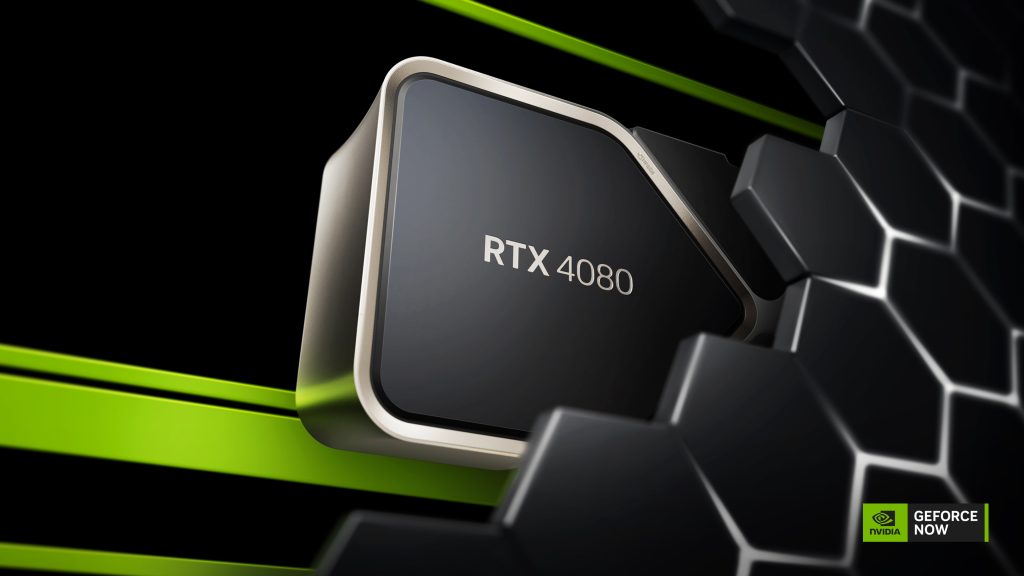Nvidia Corporation, commonly referred to as Nvidia, is a technology powerhouse that has made a profound impact on the world of graphics processing units (GPUs), artificial intelligence (AI), and high-performance computing (HPC). Founded in 1993 by Jensen Huang, Chris Malachowsky, and Curtis Priem, Nvidia has evolved from a relatively obscure startup to a global leader in the fields of visual computing and AI.
With a strong commitment to innovation and a relentless pursuit of excellence, Nvidia has cemented its position as a company that shapes the future of computing. This article explores Nvidia’s history, its key products and technologies, its contributions to various industries, and its vision for the future.
The Genesis of Nvidia: A Journey Begins
Nvidia was founded with a clear vision: to create cutting-edge GPUs that could push the boundaries of visual computing. Jensen Huang, who later became the company’s CEO, was driven by a passion for graphics and a belief that GPUs could be harnessed for more than just gaming and graphics rendering. Under his leadership, Nvidia set out to revolutionize the computing industry.
In 1995, Nvidia released its first product, the NV1 graphics accelerator. While it didn’t achieve widespread success, it laid the groundwork for the company’s future endeavors. Nvidia’s breakthrough came in 1999 with the introduction of the GeForce 256, the world’s first GPU. This marked the beginning of a new era in computing, where GPUs would become essential not only for gaming but also for scientific research, content creation, and more.
A Decade of Dominance: Gaming and Beyond
Throughout the 2000s, Nvidia solidified its position as the leading GPU manufacturer for gaming enthusiasts and professionals alike. The GeForce series of GPUs became synonymous with high-performance graphics, setting industry standards for graphics quality and gaming experiences. Nvidia’s focus on developing powerful and energy-efficient GPUs earned them a loyal following among gamers and PC enthusiasts.
But Nvidia’s ambitions extended beyond gaming. The company recognized the potential of GPUs for parallel processing and scientific computing. In 2006, Nvidia introduced CUDA (Compute Unified Device Architecture), a parallel computing platform and application programming interface (API) that allowed developers to harness the power of GPUs for non-graphical tasks. This move would have a profound impact on fields like AI, scientific research, and HPC.
The AI Revolution: Powering Deep Learning with GPUs
The emergence of deep learning and neural networks in the 2010s brought about a seismic shift in the world of AI. Training deep neural networks requires massive computational power, and GPUs proved to be a game-changer in this regard. Nvidia’s GPUs, with their parallel processing capabilities, were ideally suited for accelerating deep learning tasks.
In 2012, Nvidia introduced the Tesla K20 GPU, designed specifically for high-performance computing and deep learning applications. This marked the beginning of Nvidia’s journey into AI, and the company quickly became a driving force behind AI advancements. The combination of Nvidia GPUs and CUDA made it possible for researchers and organizations to train complex neural networks at unprecedented speeds.
To further support AI development, Nvidia introduced the Deep Learning Institute (DLI) in 2016, providing training and certification in AI and deep learning. DLI has since trained thousands of developers and researchers, helping to democratize AI education and skills.
A Multifaceted Ecosystem: Nvidia’s Key Products and Technologies
Nvidia’s product portfolio is vast and diverse, catering to a wide range of industries and applications. Some of the company’s key products and technologies include:
GeForce GPUs: Nvidia’s GeForce GPUs remain a dominant force in the gaming industry, consistently pushing the boundaries of graphics performance. The introduction of ray tracing technology in the RTX series GPUs has ushered in a new era of realism in gaming.
Quadro GPUs: These GPUs are tailored for professional workstations and are widely used by designers, engineers, and content creators for tasks like 3D rendering, video editing, and scientific visualization.
Tesla GPUs: Tesla GPUs are designed for HPC and AI workloads. They are the backbone of many supercomputers and data centers, powering scientific simulations, climate modeling, and cutting-edge AI research.
Nvidia AI Platforms: Nvidia offers a comprehensive suite of AI platforms, including the Nvidia AI Enterprise, Nvidia DGX Systems, and the Nvidia Jetson series for edge AI applications. These platforms make it easier for organizations to deploy AI solutions at scale.
Nvidia Software Stack: Nvidia provides a robust software ecosystem, including CUDA, cuDNN, TensorRT, and the Nvidia GPU Cloud (NGC), which simplifies AI development and deployment.
Nvidia Omniverse: This groundbreaking platform is focused on collaborative 3D content creation and simulation, enabling real-time collaboration across industries like gaming, film, architecture, and automotive design.
Drive Platform: Nvidia’s Drive platform is dedicated to autonomous vehicles, providing the hardware and software solutions needed for self-driving cars to navigate safely and efficiently.
Transforming Industries: Nvidia’s Impact
Nvidia’s influence extends far beyond the realm of gaming and AI research. The company’s technology has had a profound impact on several industries:
Healthcare: Nvidia GPUs are used for medical imaging, drug discovery, and genomics research. AI-powered diagnostics and personalized medicine have become possible through the computational capabilities of Nvidia hardware.
Finance: The financial sector relies on Nvidia GPUs for risk assessment, fraud detection, algorithmic trading, and portfolio optimization. GPUs enable high-speed data analysis and complex simulations.
Transportation: Nvidia’s Drive platform is at the forefront of autonomous vehicle development. It provides the AI and computing power required for self-driving cars to process vast amounts of sensor data in real time.
Entertainment: In the film and animation industry, Nvidia GPUs are indispensable for rendering realistic graphics and special effects. The Omniverse platform facilitates collaboration among creators in the entertainment world.
Energy: Energy companies use Nvidia GPUs for seismic data analysis, reservoir simulation, and optimizing oil and gas operations. GPUs accelerate the computation of complex models.
Manufacturing: Manufacturing companies employ Nvidia GPUs for quality control, predictive maintenance, and process optimization. AI-driven robotics and automation have become more efficient and accurate.
Nvidia’s commitment to innovation and its willingness to collaborate with partners and developers have played a crucial role in shaping these industries. The company’s GPUs and AI technologies have become fundamental tools for organizations looking to stay competitive and innovate in a rapidly evolving technological landscape.
Nvidia’s Vision for the Future
Nvidia’s journey is far from over, and the company has ambitious plans for the future. Some of the key areas where Nvidia is focusing its efforts include:
AI Everywhere: Nvidia envisions AI becoming a fundamental part of every industry and application. The company is working to make AI more accessible and efficient through hardware and software innovations.
Autonomous Machines: Whether it’s self-driving cars, drones, or robots, Nvidia aims to provide the AI and computing capabilities needed to make machines autonomous, safe, and intelligent.
Data-Centric Computing: Nvidia recognizes the importance of data in the modern world. The company is developing technologies to accelerate data processing and analysis, enabling insights and discoveries in fields like healthcare, climate science, and finance.
Sustainability: Nvidia is committed to minimizing its environmental footprint. The company is working on energy-efficient GPU designs and investing in renewable energy sources for its data centers.
Omniverse Expansion: Nvidia plans to expand its Omniverse platform to enable real-time collaboration in even more industries, pushing the boundaries of digital content creation and simulation.
Nvidia Corporation has come a long way from its humble beginnings, transforming from a graphics card manufacturer into a global technology leader with a profound impact on gaming, AI, and numerous other industries. Through innovation, strategic partnerships, and a relentless pursuit of excellence, Nvidia continues to shape the future of computing. As the company focuses on democratizing AI, enabling autonomous machines, and advancing data-centric computing, it remains at the forefront of technological innovation, poised to tackle the challenges and opportunities of tomorrow’s digital landscape. Nvidia’s journey is a testament to what can be achieved when a company dares to dream big and push the boundaries of what is possible in the world of technology.
Challenges and Competition Ahead
While Nvidia’s achievements and contributions to the world of technology are undeniable, the company also faces significant challenges and competition as it continues its journey into the future. These challenges include:
Increasing Competition: The GPU market has become increasingly competitive, with companies like AMD and Intel actively challenging Nvidia’s dominance. As competition intensifies, Nvidia will need to stay innovative and maintain its focus on delivering cutting-edge technology.
Supply Chain Constraints: The technology industry has been grappling with supply chain disruptions, which can affect the production and availability of Nvidia’s products. Managing these challenges effectively will be crucial for the company’s growth.
Ethical AI: As AI becomes more pervasive, ethical considerations surrounding AI development and usage are gaining prominence. Nvidia, like other AI companies, will need to address ethical concerns and ensure the responsible deployment of AI technologies.
Regulatory Scrutiny: The technology industry is facing increased regulatory scrutiny, particularly in areas related to data privacy, antitrust, and AI ethics. Nvidia will need to navigate these regulatory challenges to continue its expansion.
Environmental Responsibility: Nvidia’s commitment to sustainability and reducing its environmental impact is commendable. However, the company will need to continually invest in eco-friendly technologies and practices to meet its sustainability goals.
Market Diversification: While Nvidia has expanded its presence in various industries, it still relies heavily on the gaming and data center markets for a significant portion of its revenue. Diversifying into other sectors may be essential to reduce business risk.
Nvidia Corporation’s remarkable journey from a graphics card manufacturer to a global technology leader is a testament to the power of innovation, determination, and visionary leadership. The company’s impact on gaming, AI, and numerous other industries has been profound and far-reaching.
As Nvidia continues to shape the future of computing, it must remain vigilant in addressing the challenges that lie ahead. By staying committed to innovation, sustainability, and responsible AI development, Nvidia can continue to be a driving force in the tech industry and contribute to the advancement of society as a whole.
With its diverse portfolio of products and technologies, commitment to AI accessibility, and expansion into collaborative platforms like Omniverse, Nvidia is well-positioned to make significant contributions to a future where AI, data, and technology are seamlessly integrated into our daily lives, transforming industries and improving the human experience.
As we move further into the 21st century, Nvidia’s story serves as an inspiring example of how a company’s vision and dedication to excellence can lead to transformative advancements that benefit individuals, businesses, and society at large. Nvidia’s legacy is not just in the technology it creates but in the profound impact it has on the world.







